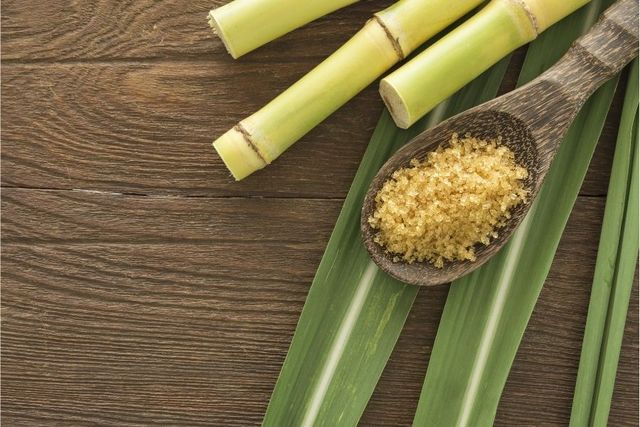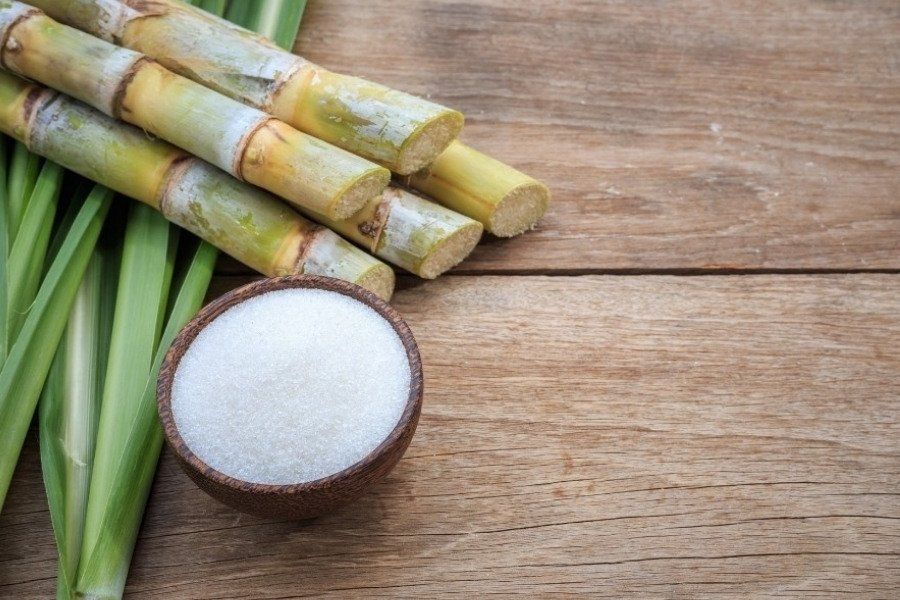What Are Sugar Canes Used For in Making Bioplastics and Compostables
Revealing the Importance of Sugar Canes: What Are Sugar Canes Utilized For in the Cane Sugar Sector?
Sugar walking sticks function as the keystone of the walking stick sugar market, primarily supplying the raw material required for sugar manufacturing. Their capacity to transform sunlight right into sucrose via photosynthesis is important. Past their sweetening properties, sugar canes discover utility in various cooking applications and arising sectors. The complete degree of their impact prolongs beyond the kitchen. This discussion will explore the diverse duties of sugar walking sticks in both market and economic climate.
The Role of Sugar Canes in Sugar Manufacturing
Sugar walking canes act as the foundational resources in the cane sugar market, playing a critical role in the production process. These tall, seasonal lawns thrive in subtropical and tropical environments, where they soak up sunlight and nutrients to produce sucrose. The harvesting of sugar walking canes typically takes place when the plants get to maturity, maximizing their sugar content.Once collected, the walking sticks undergo crushing to draw out the juice, which has liquified sugars. This juice is after that cleared up and concentrated with dissipation, changing it right into a syrup. Subsequently, formation occurs, allowing for the splitting up of sugar crystals from the continuing to be syrup.The drawn out sugar undertakes further refining to accomplish the wanted pureness and high quality - What Are Sugar Canes Used For. The entire procedure highlights the important payment of sugar canes to sugar production, underscoring their significance as both a raw material and a driver in the manufacturing of walking cane sugar.
Diverse Applications in Food and Drink Market
In the food and beverage sector, sugar walking cane serves several necessary functions. It acts not only as a primary sugar in numerous items however likewise as a flavoring agent that improves preference accounts. In addition, its elements play a substantial duty in fermentation and distillation procedures, adding to the production of alcoholic drinks.
Sweetener in Products

The adaptability of walking cane sugar as a sweetener makes it a staple in a broad range of food and beverage products. Extensively used in baked goods, it enhances the preference and structure of cakes, cookies, and pastries by offering moisture and promoting browning throughout baking. In beverages, walking cane sugar is a prominent selection for sweetening teas, soft drinks, and juices, enabling a well balanced flavor account. In addition, it acts as a crucial ingredient in marinates, dressings, and sauces, adding to a harmonious mix of tastes. Cane sugar's capacity to liquify quickly and its regular sweet taste profile even more solidify its duty as a favored sweetener - What Are Sugar Canes Used For. On the whole, its varied applications underscore the indispensable function of cane sugar in the culinary landscape
Seasoning Agent Usage
Utilizing walking stick sugar as a flavoring agent expands beyond its role as a simple sugar, enriching a selection of culinary productions. In the food and beverage market, it boosts taste profiles by balancing acidity and anger, making it an essential part in dressings, marinades, and sauces. Furthermore, walking cane sugar adds to the general mouthfeel, supplying a pleasurable structure in baked goods and confections. Its caramelization throughout cooking adds depth to both full-flavored and sweet dishes, while also serving as a preservative in jams and jellies. Additionally, in drinks, walking stick sugar is utilized to intensify tastes in mixed drinks and sodas, guaranteeing an extra delightful drinking experience. This flexibility highlights its importance in varied cooking applications.
Fermentation and Purification
Walking stick sugar plays a considerable function in fermentation and purification procedures, which are essential in generating a range of liquors and foodstuff. Throughout fermentation, yeast converts sugars into alcohol and co2, a fundamental action in crafting drinks like rum and vodka. Distillation additionally purifies these alcoholic blends, concentrating tastes and increasing alcohol web content. Beyond drinks, walking stick sugar is likewise essential in creating vinegar and specific food ingredients through fermentation. The adaptability of walking stick sugar improves the flavor accounts and quality of these items, making it indispensable in the food and drink industry. Its payment not just sustains traditional methods yet also promotes innovation in crafting brand-new flavors and experiences for customers.
Sugar Canes in Biofuel Production
As interest in eco-friendly energy resources expands, sugar walking canes are significantly identified for their capacity in biofuel production. The biomass stemmed from sugar walking sticks can be changed right into ethanol, a lasting fuel option that minimizes greenhouse gas emissions compared to fossil gas. This procedure normally involves fermenting the sugar extracted from the walking cane, which is after that distilled to create high-purity ethanol suitable for usage in vehicles.Additionally, sugar cane bagasse, the fibrous deposit left after juice extraction, can be used as a feedstock for bioenergy. It can be shed to create heavy steam and electrical energy, contributing to energy self-sufficiency in sugar mills. Nations such as Brazil have efficiently incorporated sugar walking stick biofuel into their energy plans, resulting in lowered reliance on imported fuels - What Are Sugar Canes Used For. In general, sugar canes represent an encouraging opportunity for biofuel manufacturing, lining up farming experiment ecological sustainability goals
Industrial Uses of Sugar Canes
While often identified mainly for sugar manufacturing, sugar walking canes also have varied commercial applications that extend well beyond the food field. The fibrous results of sugar walking cane, referred to as bagasse, function as a beneficial source in numerous industries. Bagasse is generally used as a biofuel, producing power in sugar mills and other facilities. Additionally, it can be processed into paper, cardboard, and biodegradable products, promoting sustainable practices.In enhancement, sugar walking sticks add to the production of molasses, a byproduct made use of in the fermentation procedure for generating alcohol and yeast. This adaptability makes sugar walking canes indispensable to the beverage and pharmaceutical markets. Additionally, sugar cane extracts are employed in the cosmetics market, supplying all-natural active ingredients for skin care and beauty products. Overall, the industrial usages of sugar walking canes highlight their value beyond sugar, showcasing their function in advertising sustainability and sustaining numerous markets.
Economic Impact of Sugar Walking Stick Cultivation
The financial influence of sugar cane cultivation is substantial, mostly through job creation and export revenue generation. This market not just gives job opportunity in country areas however also adds significantly to nationwide economic climates using exports. Comprehending these elements highlights the crucial function sugar walking stick plays in both international and neighborhood markets.
Task Development Opportunities
Often ignored, the sugar walking cane sector plays a necessary duty in task production, considerably affecting regional economic climates. The farming, harvesting, and handling of sugar walking cane produce countless employment possibilities, from area workers to factory team. In numerous areas, these jobs supply incomes for countless family members, adding to neighborhood security and development. Furthermore, secondary markets such as transport, tools manufacturing, and retail benefit from the sugar walking stick sector, additional increasing employment choices. Seasonal job during growing and harvest likewise sustains temporary positions, allowing workers to gain earnings in otherwise lean periods. In general, the sugar walking cane industry offers as an essential financial engine, promoting job production and improving the quality of life for numerous people and areas.
Export Earnings Generation

Lasting Practices in Sugar Walking Cane Farming
While traditional sugar walking stick farming practices have usually led to ecological destruction, an expanding variety of farmers are adopting lasting methods that focus on ecological balance. These methods include crop turning, which improves dirt fertility and reduces insect outbreaks, and using natural fertilizers to reduce chemical runoff. Furthermore, some farmers are executing incorporated bug management methods, which concentrate on using all-natural killers and biopesticides as opposed to harmful chemicals.Water preservation strategies, such as drip watering, are also getting traction, allowing for efficient water usage while preserving crop health and wellness. Additionally, lots of farmers are spending in renewable resource sources, such as biomass from sugar cane waste, to power procedures and decrease their carbon impact. These sustainable techniques not only shield communities however additionally boost the long-lasting viability of sugar walking cane farming, making sure that it can proceed to fulfill international sugar demands while lessening environmental effect.
Frequently Asked Questions
Just How Are Sugar Canes Harvested and Processed?
Sugar canes are gathered utilizing hand-operated approaches or mechanical cutters, then moved to manufacturing facilities. There, they undergo cleaning, squashing, and removal processes to acquire juice, which is after that cleared up, evaporated, and crystallized right into sugar.
What Is the Nutritional Worth of Sugar Walking Cane?
The nutritional value of sugar walking stick consists of carbohydrates, largely in the type of sucrose, together with trace amounts of minerals and vitamins like calcium and potassium. However, it is reduced in protein and fat material overall.
Can Sugar Cane Be Grown in Non-Tropical Areas?
Sugar walking cane can be grown in non-tropical areas, but it needs specific problems such here are the findings as adequate warmth, moisture, and ideal soil. Adaptation and farming practices are vital for successful development outside traditional exotic environments.

What Illness and parasites Influence Sugar Walking Stick Crops?
Conditions and bugs considerably impact sugar cane crops. Typical threats include the sugarcane borer, red rot, and mosaic infection, which can decrease yield and high quality, requiring efficient monitoring methods to safeguard these crucial agricultural resources.
How Does Sugar Walking Stick Farming Effect Local Communities?
Sugar walking stick farming substantially influences regional areas by providing employment possibility, advertising economic development, and sustaining regional companies. However, it can likewise cause social obstacles and ecological worries, influencing area health and sustainability. Sugar canes serve as the keystone of the cane sugar sector, mainly providing the raw material needed for sugar manufacturing. Sugar walking sticks offer as the fundamental raw material in the walking stick sugar sector, playing an important role in the production process. The harvesting of sugar canes commonly takes place when the plants reach maturation, maximizing their sugar content.Once collected, the canes undergo crushing to draw out the juice, which contains liquified sugars. While often identified mostly for sugar production, sugar walking canes likewise have diverse industrial applications that extend well past the food industry. As worldwide need for sugar proceeds to climb, countries rich in sugar walking stick check out this site resources capitalize on this possibility, exporting raw sugar and improved products to worldwide markets.